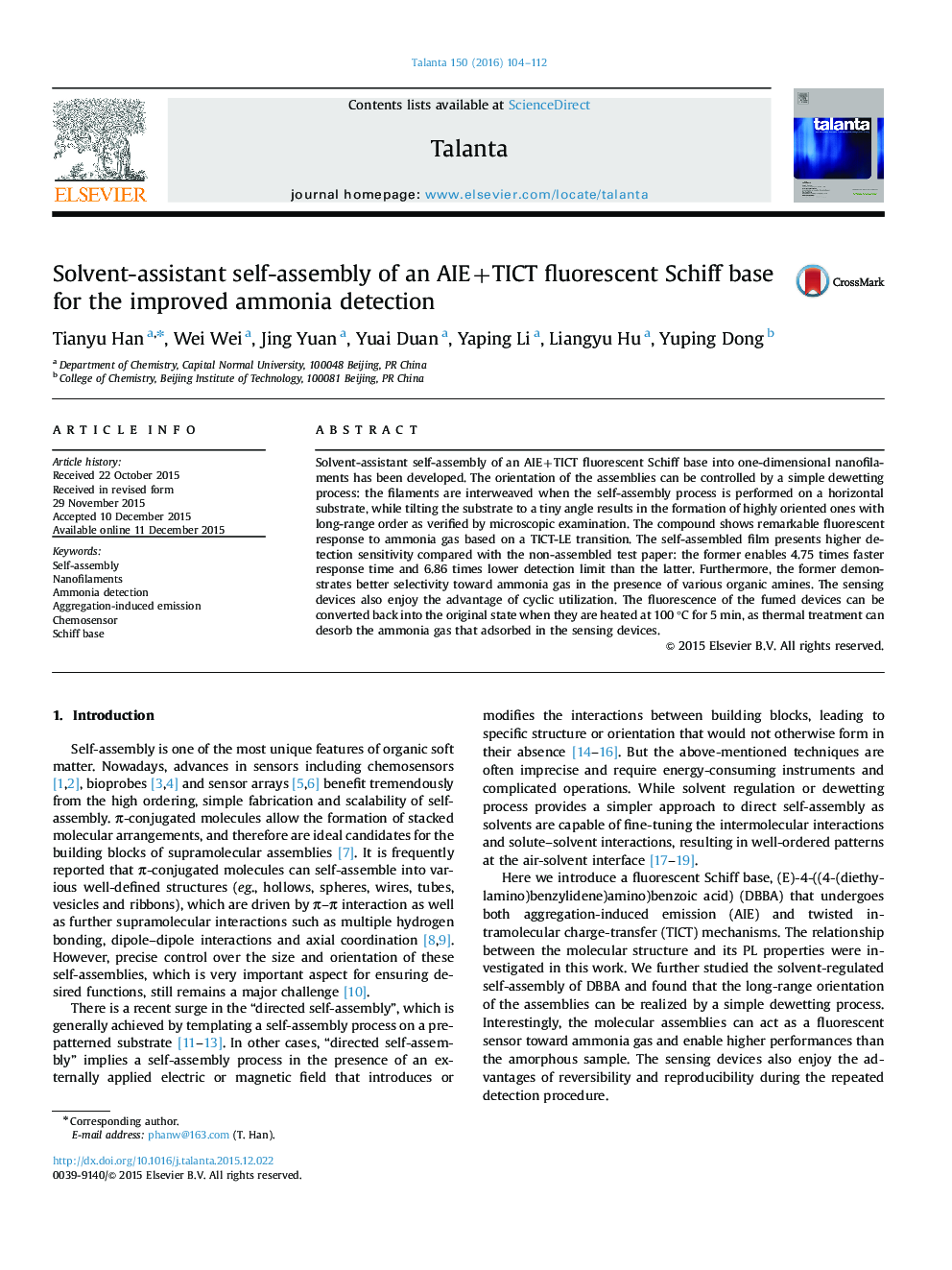| Article ID | Journal | Published Year | Pages | File Type |
|---|---|---|---|---|
| 1242150 | Talanta | 2016 | 9 Pages |
•Solvent-assistant self-assembly into 1D nanofilaments has been developed.•The orientation of the filaments can be controlled by a simple dewetting process.•The filaments enables higher detection sensitivity and selectivity.•The sensing devices enjoy the advantages of easy fabrication, cyclic utilization.
Solvent-assistant self-assembly of an AIE+TICT fluorescent Schiff base into one-dimensional nanofilaments has been developed. The orientation of the assemblies can be controlled by a simple dewetting process: the filaments are interweaved when the self-assembly process is performed on a horizontal substrate, while tilting the substrate to a tiny angle results in the formation of highly oriented ones with long-range order as verified by microscopic examination. The compound shows remarkable fluorescent response to ammonia gas based on a TICT-LE transition. The self-assembled film presents higher detection sensitivity compared with the non-assembled test paper: the former enables 4.75 times faster response time and 6.86 times lower detection limit than the latter. Furthermore, the former demonstrates better selectivity toward ammonia gas in the presence of various organic amines. The sensing devices also enjoy the advantage of cyclic utilization. The fluorescence of the fumed devices can be converted back into the original state when they are heated at 100 °C for 5 min, as thermal treatment can desorb the ammonia gas that adsorbed in the sensing devices.
Graphical abstractFigure optionsDownload full-size imageDownload as PowerPoint slide
